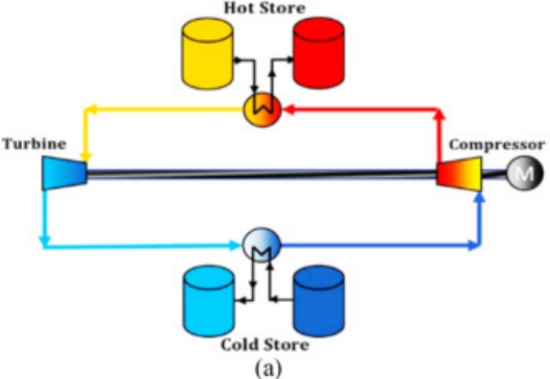The paper, on which the above article was based:
https://www.sciencedirect.com/science/a ... 4722000737#!
Includes these illustrations of the system:
The heat storage cycle:

- Resize_20221120_065525_5694.jpg (49.46 KiB) Viewed 2458 times
Where the CO2 is compressed, which causes it to heat up to over 1000° F and the "reverse" sort of electrical generation cycle:

- Resize_20221120_065525_5528.jpg (47.53 KiB) Viewed 2458 times
Where the compressed CO2 is expanded generating electricity, which process takes out the heat/energy with the result that the CO2 cools back down.
The only thing that changes really is the M for motor, presumably, changes to a G for generator.
In other words, I suppose, or it appears, the motor that compressed the air is run in reverse and used as a generator. (Also the turbine becomes a compressor).
This is, essentially a heat pump or refrigeration system.
IMO going supercritical is not really necessary. Phase change in a heat pump is possible by just using, well, phase change. What the advantage might be of maintaining the whole system in a supercritical state at high pressure I don't really know. Not really that high pressure, I think CO2 goes supercritical a little over 1000 psi. A paintball compressor goes closer to 3000 psi but it does tend to put the system outside the DIY domain.
I like DIY so, I might be interested in a similar system but would probably do it a little differently.
For example, a reverse Brayton cycle (which is what this looks like, minus the supercritical element) can use ordinary air with much the same result.
There are also some apparent inefficiencies in the system depicted here, and a modified version is presented later in the paper, but that IMO just introduces needles complications
What is apparent to me, however, as a Stirling engine enthusiast is, this heat "storage" methodology results in a wide temperature differential just sitting there.